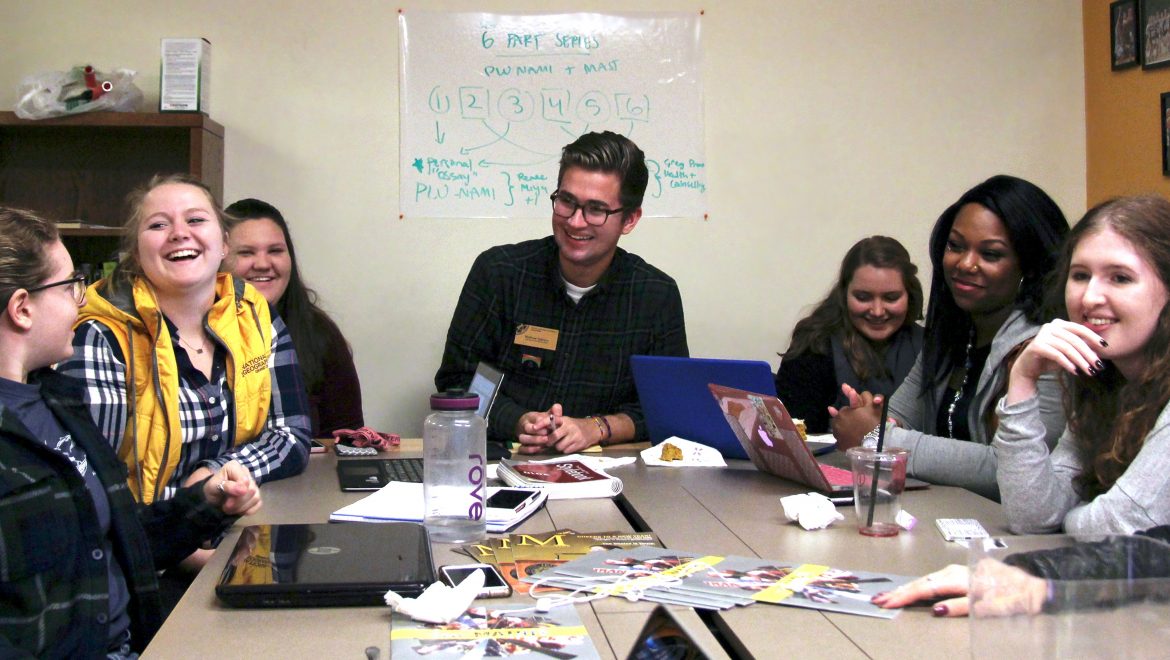By Genny Boots ’18
The Mooring Mast, Pacific Lutheran University’s 92-year-old student newspaper, experienced a facelift this year. With a new name and structure, PLU’s student media catapulted into one of the nation’s few converged college newsrooms.
“We are in the two percent of converged college newsrooms in the country, and definitely one of the very few in Washington state,” said Samantha Lund, the editor in chief for 2015-16.
Convergence is a buzzword in the news world. With so many forms of media used to tell stories, convergence focuses on suiting the medium to the story. Instead of having the newspaper, TV station and radio station all report separately on the same story, convergence brings radio, TV and print together.
“It is story-first journalism,” Lund said. “Now, students work with each other to complete stories that give a much fuller perspective.”
In 2015, the student-run television station KCNS-TV changed its name to MastTV with convergence as the goal. The television station created video stories to support print material and continued with their own weekly news show, News@Nine.
Convergence began to grow. At the start of the year, the “Mooring” was dropped from the newspaper’s title. “No one knew what a mooring mast was,” Lund said. “Most people thought it said morning mast.”
In September 2015, Mast Magazine was launched. A monthly production focusing on feature-length stories and design. The growth of Mast Media continued with news programming on the student radio station LASR. The station produced seven hours of content a week on the station, including the popular Mast Radio Sports Talk.
In spring 2016, the Mast Media app went live. Lund hopes this app can connect students to campus resources and the news, and bring PLU’s student media into the digital era.
“The app will allow students to grow and understand news in this new reporting environment, where readers get their news online rather than in print,” Lund said. “We want to turn out reporters who are capable and ready for the professional setting.”
The drive to mobile news is echoed in the larger media environment. People between the ages of 16 and 34 spend 40 percent of total media time on mobile devices (according to TheMediaBriefing.com and a survey from ComScore). That far outweighs usage from other demographics and shows a trend toward mobile media for generations to come.
For The Mast, this attention to mobile news delivery is the cap to a year of widespread growth.
“We have started so many news things this year and revitalized what student media means at PLU,” Lund said. “I’m excited for the upcoming years to really perfect what we started.”
Mast Media placed as finalists in two Mark of Excellence awards from the Society of Professional Journalists (SPJ): Mast TV staff as the finalist for Best Newscast and the second issue of Mast Magazine as a finalist for Best Student Magazine. Mast Media was awarded Best Online Breaking News from sophomore Matthew Salzano’s piece “No swiping new Lutecards,” which detailed PLU’s new contactless entry process across campus.
Media beyond PLU’s campus has changed a lot over the decades, and Mast Media is revamped and ready for the next 92 years to help students keep up with the changes.
Did you know?
The Mooring Mast newspaper started it all when it was first printed in 1924 in the basement of the university chapel. The unusual name of the newspaper came from the USS Shenandoah, a U.S. Navy airship. The students derived the name from the large mooring structure for the airship at nearby Fort Lewis.


